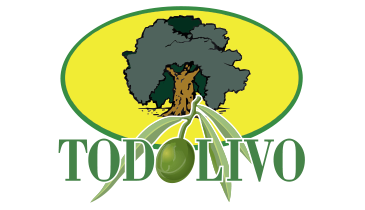-
The excellent results obtained in the trials carried out open a door of hope for the table olive sector.
-
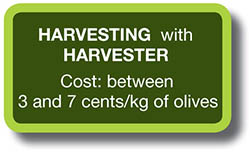
Given the importance of the table olive sector in Spain and in the world, and aware of the difficulties this is going through (high harvesting costs and lack of profitability leading many olive growers to abandon olive cultivation), in 2007 we decided to include a number of trials in our R&D&I programme in order to evaluate the agronomic conduct of several varieties of table olives planted in high density olive groves with different layouts.
-
First Trial of High Density table Olive Groves
Estate:
Locality:
date of plantation:
Plantation layout:
Varieties:Almadragueira
Campo Maior (Portugal)
July 2007
3,75 x 1,35 m
Manzanilla Cacereña and Sevillana -
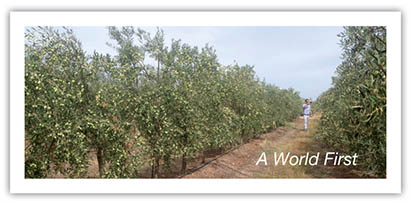
Content of the trial: the following were analysed: production, fruit size, harvesting speed, cost of harvesting, state of the olives immediately after harvesting and after the “cooking” (normal and traditional process the olives are subjected to in the industry for their dressing in the Seville style). Histological data of the tissues of the pulp were obtained in order to have detailed knowledge of the possible cellular damage caused by the harvesting of the olives with a harvester.
Note: On the estate, the recently harvested olives were placed in water tanks with 2.4% diluted lye while awaiting transport in tankers to the dressing industry.
-
THE RESULTS OBTAINED WERE AS FOLLOWS
Production data:
Variety 2010 2011 2012 2013 2014 2015 2016 Average/ha Manzanilla “Cacereña” 3.000 9.700 17.578 13.850 15.836 12.786 14.758 12.501 Manzanilla “Sevillana” 3.000 9.300 9.677 11.505 7.425 10.568 9.720 8.742 -

-

-
Data obtained from the 2012 harvest:
Note: that year, the Universidad de Sevilla collaborated jointly with Todolivo in carrying out the trial.- Average size of the fruit: 3 g manzanilla cacereña and 3,5 g manzanilla sevillana.
- Harvesting with harvester:
- Speed of harvesting: 3.5 km/hectare (1 hour and 25 minutes/hectare)
- Cost of harvesting: (2.3 cents per kilo of olives)
- Speed of harvesting: 3.5 km/hectare (1 hour and 25 minutes/hectare)
- Damage observed at “2 hours” from harvesting
- Bruised fruit (affected superficially): Manzanilla Cacereña (90%) and Manzanilla Sevillana (100%)
- Broken fruit: Manzanilla Cacereña (less than 2%) and Manzanilla Sevillana (17%)
- Recovery of the “bruised” fruit after the “cooking” process (traditional technique used by the industry for dressing table olives)
- Manzanilla Cacereña: 97.3% and Manzanilla Sevillana (98.7%)
State of the “Manzanilla Cacereña” olives after the traditional “cooking” process they are subjected to in the dressing industry.
-
Manzanilla Cacereña
Hand Picked
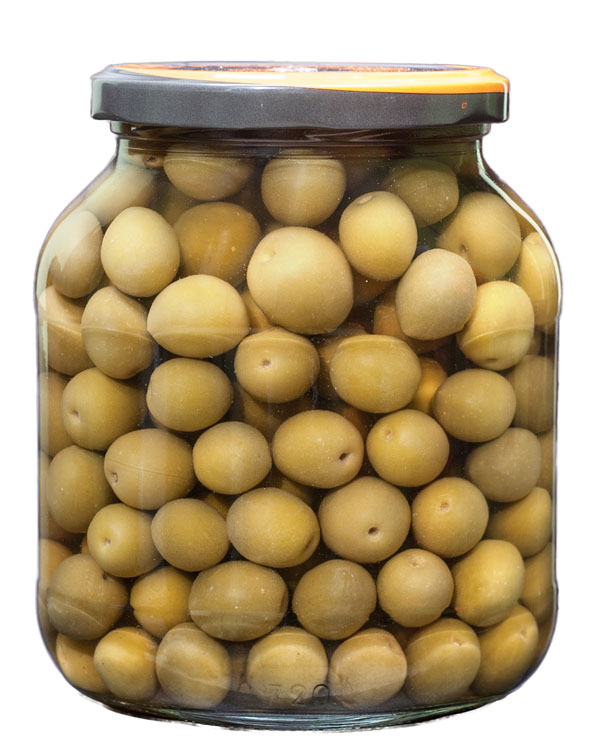
-
Manzanilla Cacereña
Mechanically picked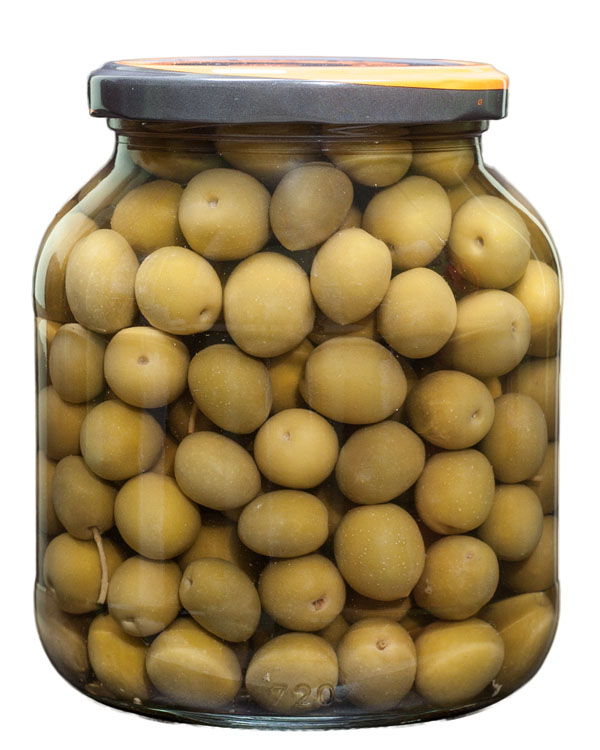
Note. Olives from the 2012 harvest
State of the “Manzanilla Sevillana” olives after the traditional “cooking” process they are subjected to in the dressing industry.
-
Manzanilla Sevillana
Hand Picked
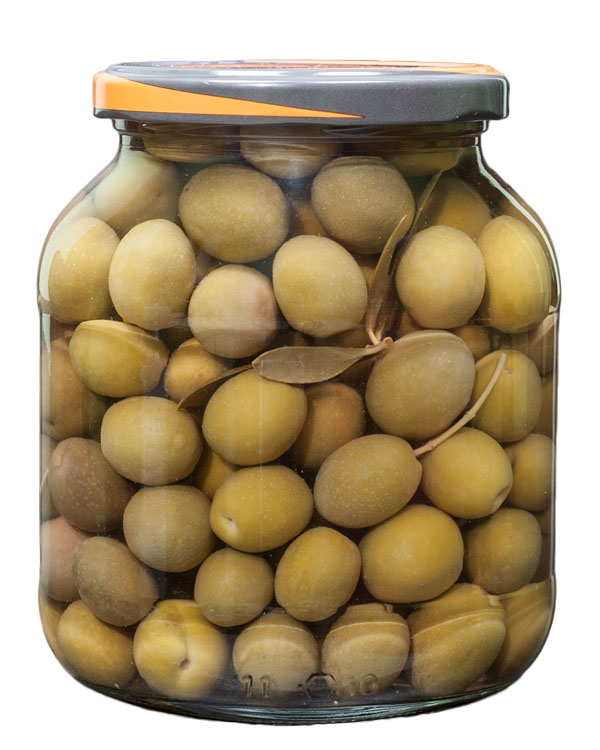
-
Manzanilla Sevillana
Mechanically Picked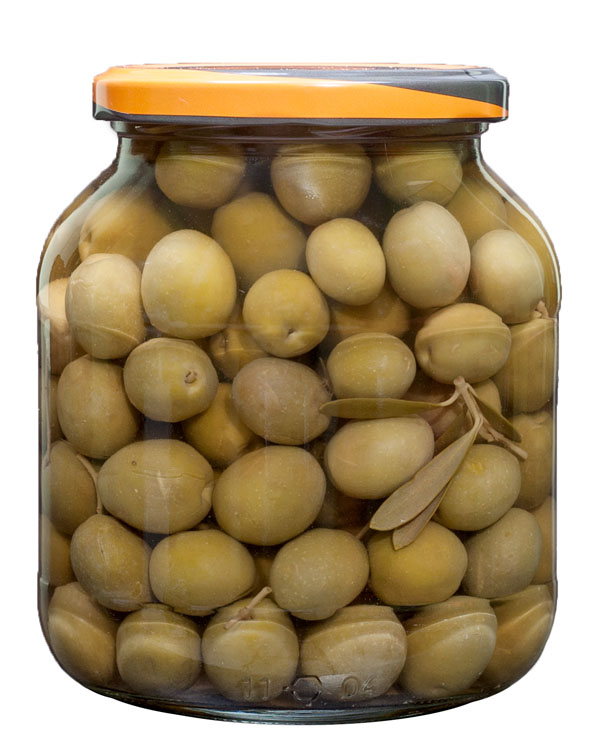
Note. Olives from the 2012 harvest
-

-
Data obtained from the trial of olives from the 2014 harvest carried out by Todolivo S.L. on the Almadragueira Estate
(Pending harvesting)
-
- Average size of the fruit: g Manzanilla Cacereña and g Manzanilla Sevillana
- Harvesting with harvester
- Speed of harvesting:
- Cost of harvesting:
- Damage observed at “2 hours” from harvesting
- Bruised fruit (affected superficially):
Manzanilla Cacereña (%) and Manzanilla Sevillana (%)
- Broken fruit:
Manzanilla Cacereña (%) and Manzanilla Sevillana (%)
- Bruised fruit (affected superficially):
- Recovery of the “bruised” fruit after the “cooking” process (traditional technique used by the industry for dressing table olives)
- Manzanilla Cacereña: % and Manzanilla Sevillana (%)
-

Other trials carried out by on High Density
Table Olive groves
| Locality | Date of plantation | Plantation layout | Varieties | |
|---|---|---|---|---|
| 2º | Elvas (Portugal) | January 2008 | 3,75 x 1,35 m | Hojiblanco |
| 3º | Umbrete (Seville, Spain) | February 2011 | 6 x 1,5 m | Manzanillo Cacereño and Sevillano |
| 4º | Fuente Piedra (Malaga) | April 2011 | 7 x 3 m | Hojiblanco |
| 5º | Brenes (Seville, Spain) | April 2012 | 6 x 2 m | Manzanillo Sevillano |
| 6º | Lora del Río (Seville) | May-June 2013 | 5 x 1,5 m (Manzanillo Cacereño) | 7 x 1,5 m (Hojiblanco) |
